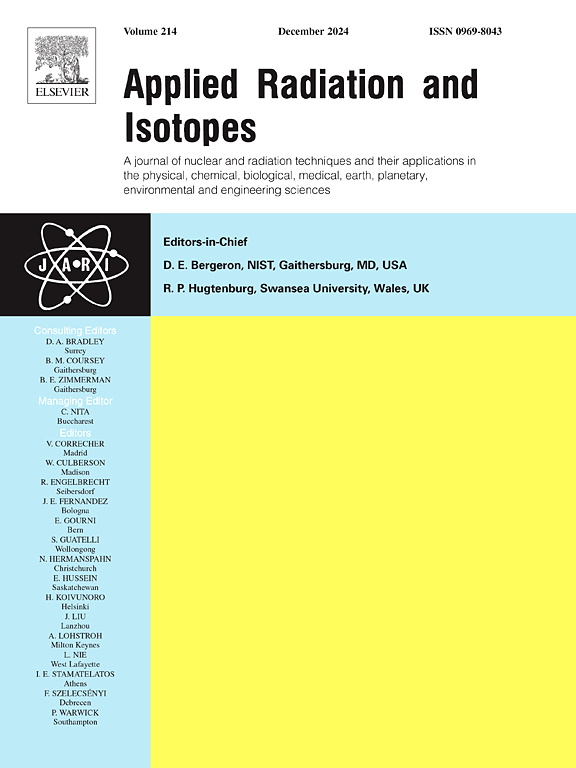Aromatic ring tritiation and tritium decay catastrophe
IF 1.6
3区 工程技术
Q3 CHEMISTRY, INORGANIC & NUCLEAR
引用次数: 0
Abstract
During her development of the radioimmunoassay (RIA) in the late 1950’s, Rosalyn Yalow also discovered a curious property involving the 125I peptides used in her work. She found that many 125I peptides suffered irrevocable damage as they individually decayed. As a result of their altered structures, these non-radioactive fragmented peptides could no longer bind to the biological target and interfere with the non-decayed 125I peptide binding. This useful outcome acted to preserve the potency and molar activity of the remaining 125I peptides. Yalow termed this phenomenon “decay catastrophe.” Recently, the first documented instance of tritium decay catastrophe for a fully tritiated methyl group (-C3H3) was reported. In this current work, an example is provided which also extends tritium decay catastrophe to a high molar activity radioligand labelled with tritium in several aromatic ring positions.
芳环氚化和氚衰变突变
在20世纪50年代后期她发展放射免疫测定(RIA)的过程中,Rosalyn Yalow还发现了一个奇怪的特性,涉及她工作中使用的125I肽。她发现许多125I肽在单独衰变时遭受了不可挽回的损害。由于它们的结构改变,这些非放射性碎片肽不能再与生物靶标结合并干扰非衰变的125I肽结合。这个有用的结果起到了保留剩余的125I肽的效力和摩尔活性的作用。Yalow将这种现象称为“衰变灾难”。最近,首次报道了一个完全氚化甲基(-C3H3)的氚衰变突变。在目前的工作中,提供了一个例子,它也扩展了氚衰变突变到在几个芳环位置上标记有氚的高摩尔活性放射性配体。
本文章由计算机程序翻译,如有差异,请以英文原文为准。
求助全文
约1分钟内获得全文
求助全文
来源期刊

Applied Radiation and Isotopes
工程技术-核科学技术
CiteScore
3.00
自引率
12.50%
发文量
406
审稿时长
13.5 months
期刊介绍:
Applied Radiation and Isotopes provides a high quality medium for the publication of substantial, original and scientific and technological papers on the development and peaceful application of nuclear, radiation and radionuclide techniques in chemistry, physics, biochemistry, biology, medicine, security, engineering and in the earth, planetary and environmental sciences, all including dosimetry. Nuclear techniques are defined in the broadest sense and both experimental and theoretical papers are welcome. They include the development and use of α- and β-particles, X-rays and γ-rays, neutrons and other nuclear particles and radiations from all sources, including radionuclides, synchrotron sources, cyclotrons and reactors and from the natural environment.
The journal aims to publish papers with significance to an international audience, containing substantial novelty and scientific impact. The Editors reserve the rights to reject, with or without external review, papers that do not meet these criteria.
Papers dealing with radiation processing, i.e., where radiation is used to bring about a biological, chemical or physical change in a material, should be directed to our sister journal Radiation Physics and Chemistry.
 求助内容:
求助内容: 应助结果提醒方式:
应助结果提醒方式:


